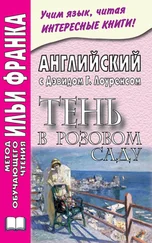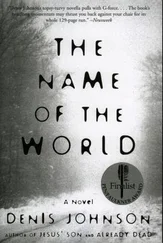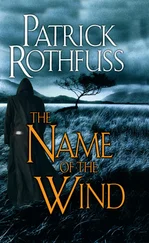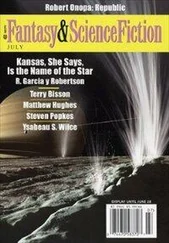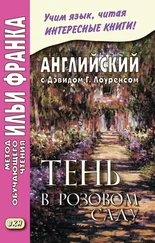Umberto Eco - The Name of the Rose
Здесь есть возможность читать онлайн «Umberto Eco - The Name of the Rose» весь текст электронной книги совершенно бесплатно (целиком полную версию без сокращений). В некоторых случаях можно слушать аудио, скачать через торрент в формате fb2 и присутствует краткое содержание. Год выпуска: 1983, ISBN: 1983, Издательство: Harcourt, Жанр: Исторический детектив, на английском языке. Описание произведения, (предисловие) а так же отзывы посетителей доступны на портале библиотеки ЛибКат.
- Название:The Name of the Rose
- Автор:
- Издательство:Harcourt
- Жанр:
- Год:1983
- ISBN:0-15-144647-4
- Рейтинг книги:4 / 5. Голосов: 1
-
Избранное:Добавить в избранное
- Отзывы:
-
Ваша оценка:
- 80
- 1
- 2
- 3
- 4
- 5
The Name of the Rose: краткое содержание, описание и аннотация
Предлагаем к чтению аннотацию, описание, краткое содержание или предисловие (зависит от того, что написал сам автор книги «The Name of the Rose»). Если вы не нашли необходимую информацию о книге — напишите в комментариях, мы постараемся отыскать её.
The Name of the Rose — читать онлайн бесплатно полную книгу (весь текст) целиком
Ниже представлен текст книги, разбитый по страницам. Система сохранения места последней прочитанной страницы, позволяет с удобством читать онлайн бесплатно книгу «The Name of the Rose», без необходимости каждый раз заново искать на чём Вы остановились. Поставьте закладку, и сможете в любой момент перейти на страницу, на которой закончили чтение.
Интервал:
Закладка:
I saw a throne set in the sky and a figure seated on the throne. The face of the Seated One was stern and impassive, the eyes wide and glaring over a terrestrial humankind that had reached the end of its story; majestic hair and beard flowed around the face and over the chest like the waters of a river, in streams all equal, symmetrically divided in two. The crown on his head was rich in enamels and jewels, the purple imperial tunic was arranged in broad folds over the knees, woven with embroideries and laces of gold and silver thread. The left hand, resting on one knee, held a sealed book, the right was uplifted in an attitude of blessing or — I could not tell — of admonition. The face was illuminated by the tremendous beauty of a halo, containing a cross and bedecked with flowers, while around the throne and above the face of the Seated One I saw an emerald rainbow glittering Before the throne, beneath the feet of the Seated One, a sea of crystal flowed, and around the Seated One, beside and above the throne, I saw four awful creatures — awful for me, as I looked at them, transported, but docile and dear for the Seated One, whose praises they sang without cease.
Or, rather, not all could be called awful, because one seemed to me handsome and kindly, the man to my left (and to the right of the Seated One), who held out a book. But on the other side there was an eagle I found horrifying, its beak agape, its thick feathers arranged like a cuirass, powerful talons, great wings outstretched. And at the feet of the Seated One, under the first two figures, there were the other two, a bull and a lion, each monster clutching a book between talons or hoofs, the body turned away from the throne, but the head toward the throne, as if shoulders and neck twisted in a fierce impulse, flanks tensed, the limbs those of a dying animal, maw open, serpentlike tails coiled and writhing, culminating, at the top, in tongues of flame. Both monsters were winged, both crowned by haloes; despite their formidable appearance, they were creatures not of hell, but of heaven, and if they seemed fearsome it was because they were roaring in adoration of One Who Is to Come and who would judge the quick and the dead.
Around the throne, beside the four creatures and under the feet of the Seated One, as if seen through the transparent waters of the crystal sea, as if to fill the whole space of the vision, arranged according to the triangular frame of the tympanum, rising from a base of seven plus seven, then to three plus three and then to two plus two, at either side of the great throne, on twenty-four little thrones, there were twenty-four ancients, wearing white garments and crowned to gold. Some held lutes in their hands, one a vase of perfumes, and only one was playing an instrument, all the others were in ecstasy, faces turned to the Seated One, whose praises they were singing, their limbs also twisted like the creatures’, so that all could see the Seated One, not in wild fashion, however, but with movements of ecstatic dance — as David must have danced before the Ark — so that wherever their pupils were, against the law governing the stature of bodies, they converged on the same radiant spot. Oh, what a harmony of abandonment and impulse, of unnatural and yet graceful postures, in that mystical language of limbs miraculously freed from the weight of corporeal matter, marked quantity infused with new substantial form, as if the holy band were struck by an impetuous wind, breath of life, frenzy of delight, rejoicing song of praise miraculously transformed, from the sound that it was, into image.
Bodies inhabited in every part by the Spirit, illuminated by revelation, faces overcome with amazement, eyes shining with enthusiasm, cheeks flushed with love, pupils dilated with joy: this one thunderstruck by a pleasurable consternation, that one pierced by a consternated pleasure, some transfigured by wonder, some rejuvenated by bliss, there they all were, singing with the expression of their faces, the drapery of their tunics, the position and tension of their limbs, singing a new song, lips parted in a smile of perennial praise. And beneath the feet of the ancients, and arched over them and over the throne and over the tetramorphic group, arranged in symmetrical bands, barely distinguishable one from another because the artist’s skill had made them all so mutually proportionate, united in their variety and varied to their unity, unique in their diversity and diverse in their apt assembly, in wondrous congruency of the parts with the delightful sweetness of hues, miracle of consonance and concord of voices among themselves dissimilar, a company arrayed like the strings of the zither, consentient and conspiring continued cognition through deep and interior force suited to perform univocally in the same alternating play of the equivocal, decoration and collage of creatures beyond reduction to vicissitudes and to vicissitudes reduced, work of amorous connecting sustained by a law at once heavenly and worldly (bond and stable nexus of peace, love, virtue, regimen, power, order, origin, life, light, splendor, species, and figure), numerous and resplendent equality through the shining of the form over the proportionate parts of the material — there, all the flowers and leaves and vines and bushes and corymbs were entwined, of all the grasses that adorn the gardens of earth and heaven, violet, cystus, thyme, lily, privet, narcissus, taro, acanthus, mallow, myrrh, and Mecca balsam.
But as my soul was carried away by that concert of terrestrial beauty and majestic supernatural signals, and was about to burst forth in a psalm of joy, my eye, accompanying the proportioned rhythm of the rose windows that bloomed at the ancients’ feet, lighted on the interwoven figures of the central pillar, which supported the tympanum. What were they and what symbolic message did they communicate, those three crisscrossed pairs of lions rampant, like arches, each with hind paws planted on the ground, forepaws on the back of his companion, mane in serpentine curls, mouth taut in a threatening snarl, bound to the very body of the pillar by a paste, or a nest, of tendrils? To calm my spirit, as they had perhaps been meant also to tame the diabolical nature of the lion and to transform it into a symbolic allusion to higher things, on the sides of the pillar there were two human figures, unnaturally tall as the column itself and twins to two others facing them on either side from the decorated imposts, where each of the oak doors had its jamb. These figures, then, were four old men, from whose paraphernalia I recognized Peter and Paul, Jeremiah and Isaiah, also twisted as if in a dance step, their long bony hands raised, the fingers splayed like wings, and like wings were their beards and hair stirred by a prophetic wind, the folds of the very long garments stirred by the long legs giving life to waves and scrolls, opposed to the lions but of the same stuff as the lions. And as I withdrew my fascinated eye from that enigmatic polyphony of sainted limbs and infernal sinews, I saw beside the door, under the deep arches, sometimes depicted on the embrasures in the space between the slender columns that supported and adorned them, and again on the thick foliage of the capital of each column, and from there ramifying toward the sylvan vault of the multiple arches, other visions horrible to contemplate, and justified in that place only by their parabolic and allegorical power or by the moral lesson that they conveyed. I saw a voluptuous woman, naked and fleshless, gnawed by foul toads, sucked by serpents, coupled with a fat-bellied satyr whose gryphon legs were covered with wiry hairs, howling its own damnation from an obscene throat; and I saw a miser, stiff in the stiffness of death on his sumptuously columned bed, now helpless prey of a cohort of demons, one of whom tore from the dying man’s mouth his soul in the form of an infant (alas, never to be again born to eternal life); and I saw a proud man with a devil clinging to his shoulders and thrusting his claws into the man’s eyes, while two gluttons tore each other apart in a repulsive hand-to-hand struggle, and other creatures as well, goat head and lion fur, panther’s jaws, all prisoners to a forest of flames whose searing breath I could almost feel. And around them, mingled with them, above their heads and below their feet, more faces and more limbs: a man and a woman clutching each other by the hair, two asps sucking the eyes of one of the damned, a grinning man whose hooked hands parted the maw of a hydra, and all the animals of Satan’s bestiary, assembled in a consistory and set as guard and crown of the throne that faced them, singing its glory in their defeat, fauns, beings of double sex, brutes with six-fingered hands, sirens, hippocentaurs, gorgons, harpies, incubi, dragopods, minotaurs, lynxes, pards, chimeras, cynophales who darted fire from their nostrils, crocodiles, polycaudate, hairy serpents, salamanders, horned vipers, tortoises, snakes, two-headed creatures whose backs were armed with teeth, hyenas, otters, crows, hydrophora with saw-tooth horns, frogs, gryphons, monkeys, dog-heads, leucrota, manticores, vultures, paranders, weasels, dragons, hoopoes, owls, basilisks, hypnales, presters, spectafici, scorpions, saurians, whales, scitales, amphisbenae, iaculi, dipsases, green lizards, pilot fish, octopi, morays, and sea turtles. The whole population of the nether world seemed to have gathered to act as vestibule, dark forest, desperate wasteland of exclusion, at the apparition of the Seated One in the tympanum, at his face promising and threatening, they, the defeated of Armageddon, facing Him who will come at last to separate the quick from the dead. And stunned (almost) by that sight, uncertain at this point whether I was in a friendly place or in the valley of the last judgment, I was terrified and could hardly restrain my tears, and I seemed to hear (or did I really hear?) that voice and I saw those visions that had accompanied my youth as a novice, my first reading of the sacred books, and my nights of meditation in the choir of Melk, and in the delirium of my weak and weakened senses I heard a voice mighty as a trumpet that said, “Write in a book what you now see” (and this is what I am doing), and I saw seven golden candlesticks and in the midst of the candlesticks One like unto the son of man, his breast girt with a golden girdle, his head and hair white as purest wool, his eyes as a flame of fire, his feet like unto fine brass, as if they burned in a furnace, his voice as the sound of many waters, and he had in his right hand seven stars and out of his mouth went a two-edged sword. And I saw a door open in heaven and He who was seated appeared to me like a jasper and a sardonyx, and there was a rainbow round about the throne and out of the throne proceeded thunder and lightning. And the Seated One took in His hands a sharp sickle and cried: “Thrust in thy sickle and reap, for the time is come for thee to reap; for the harvest of the earth is ripe”; and He that sat on the cloud thrust His sickle on the earth; and the earth was reaped.
Читать дальшеИнтервал:
Закладка:
Похожие книги на «The Name of the Rose»
Представляем Вашему вниманию похожие книги на «The Name of the Rose» списком для выбора. Мы отобрали схожую по названию и смыслу литературу в надежде предоставить читателям больше вариантов отыскать новые, интересные, ещё непрочитанные произведения.
Обсуждение, отзывы о книге «The Name of the Rose» и просто собственные мнения читателей. Оставьте ваши комментарии, напишите, что Вы думаете о произведении, его смысле или главных героях. Укажите что конкретно понравилось, а что нет, и почему Вы так считаете.

